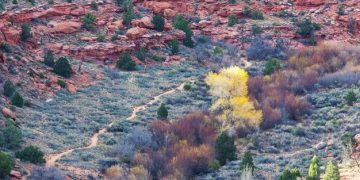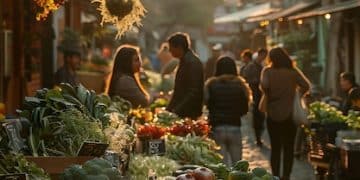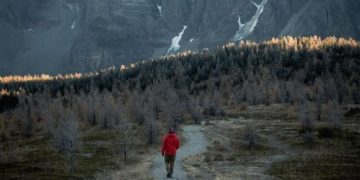US Travel Guide 2025: 5 Unique Cultural Experiences
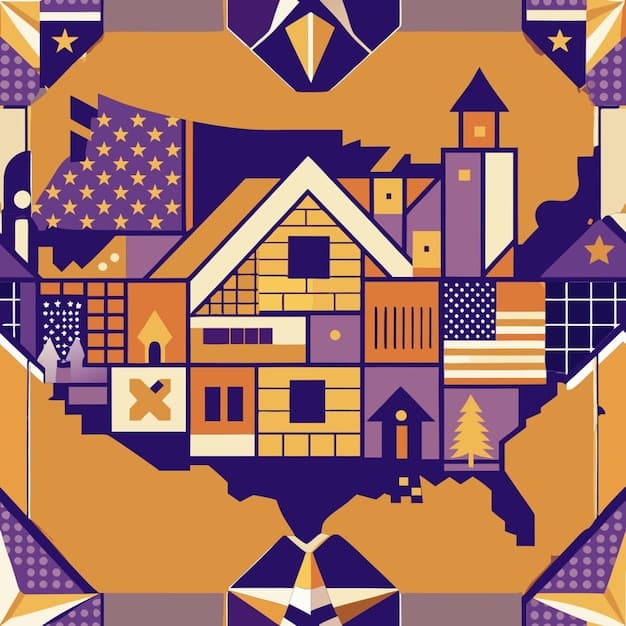
For those planning their adventures in 2025, a US Travel Guide: 5 Unique Cultural Experiences You Won’t Find Anywhere Else offers an unparalleled journey into the rich tapestry of American heritage, providing immersive insights that transcend typical tourist pathways and reveal truly distinctive cultural narratives across diverse landscapes.
Embarking on a journey across the United States in 2025 promises more than just picturesque landscapes; it’s an invitation to delve into the country’s incredibly diverse cultural fabric. This US Travel Guide: 5 Unique Cultural Experiences You Won’t Find Anywhere Else in 2025 aims to illuminate hidden gems and traditions that define America’s unique identity, offering travelers an authentic and enriching perspective far beyond the usual tourist attractions.
From Cajun Country: The Soulful Rhythms of Louisiana
Louisiana, particularly its southern region, is a land steeped in history, music, and an unparalleled culinary tradition. Baton Rouge is often considered the heart of this vibrant culture. Beyond Bourbon Street, the essence of Louisiana’s Cajun and Creole heritage beats strong, offering a deep dive into traditions shaped by French, African, and Spanish influences. This unique blend has forged a distinctive way of life, celebrated through its language, music, and food.
The sounds of Zydeco and Cajun music are ever-present, echoing from dance halls to roadside eateries. These genres, born from the communities themselves, are more than just entertainment; they are a vital expression of cultural identity. Learning a few basic dance steps or simply soaking in the rhythmic pulsations can be an incredibly rewarding experience, connecting visitors directly to the region’s soul.
The Allure of Cajun Cuisine and Festivals
Cajun cuisine is not merely food; it’s a narrative of resilience and resourcefulness, blending local ingredients with age-old cooking techniques. From the rich gumbo to spicy jambalaya, every dish tells a story. Participating in a cooking class can demystify these complex flavors, allowing visitors to take a piece of Louisiana home with them.
- Eunice Mardi Gras: A rural celebration unlike New Orleans, focusing on traditional Courir de Mardi Gras (Mardi Gras run) where costumed riders go door-to-door for ingredients to make gumbo.
- Festival International de Louisiane (Lafayette): A free, five-day festival celebrating the francophone cultures of the world, with music, art, and food from diverse nations.
- Breaux Bridge Crawfish Festival: Dedicated to all things crawfish, this festival offers ample opportunities to savor this local delicacy in various forms, alongside live music and family events.
These festivals offer a unique window into the communal spirit and joyous celebrations that define Cajun life. They are not just events; they are living testaments to traditions passed down through generations, filled with genuine warmth and hospitality. Visitors are often welcomed as temporary members of the community, invited to partake in the festivities wholeheartedly.
Exploring the bayous and swamps also offers a crucial perspective on the environment that shaped this culture. Airboat tours provide thrilling encounters with alligators and diverse wildlife, but also highlight the delicate ecosystem that supports the region’s unique way of life. The connection between the land and its people is palpable here, making every aspect of the experience deeply authentic.
Indigenous American Traditions: Pathways to Understanding in the Southwest
The American Southwest, particularly states like Arizona, New Mexico, and Utah, is home to a vibrant tapestry of Indigenous American cultures, each with its distinct heritage, languages, and traditions that have thrived for millennia. While often overlooked by mainstream tourism, engaging with these communities offers profound insights into their history, spiritual beliefs, and enduring connection to the land. This experience transcends mere sightseeing, inviting a respectful and transformative encounter.

Visitors can explore ancient pueblos, cliff dwellings, and sacred sites that dot the landscape, many of which are still actively used by Indigenous peoples today. These sites are not only architectural marvels but also living testaments to the resilience and ingenuity of their builders. Respectful visitation, often through guided tours led by tribal members, ensures a meaningful learning experience that honors the sanctity of these places.
Navajo Nation: A Vast Cultural Landscape
The Navajo Nation, sprawling across parts of Arizona, New Mexico, and Utah, is the largest Native American territory in the United States. Its vastness is matched only by the depth of its cultural offerings. Here, visitors can learn about traditional Navajo arts, such as intricate rug weaving, silversmithing, and pottery, often directly from the artisans themselves. These crafts are not just commodities; they are expressions of spiritual beliefs and historical narratives.
- Monument Valley Navajo Tribal Park: Offers guided tours led by Navajo guides, providing geological insights and cultural stories inaccessible otherwise.
- Canyon de Chelly National Monument: Co-managed by the Navajo Nation, this site features ancient cliff dwellings and is an active spiritual center for the Navajo people.
- Navajo Code Talkers Museum (Window Rock, AZ): Commemorates the pivotal role of Navajo servicemen in World War II, who used their language as an unbreakable code.
Beyond specific sites, attending a powwow or community event, if respectfully invited and when open to the public, offers a chance to experience traditional dances, music, and social gatherings. These events are vibrant celebrations of identity and continuity, providing a rare glimpse into the heart of Indigenous life. Always check specific tribal regulations and customs regarding photography and participation, as respect for privacy and tradition is paramount.
Engaging with Indigenous communities requires a commitment to ethical tourism. This means supporting tribal enterprises, respecting sovereignty, and educating oneself on their history and contemporary issues. By doing so, travelers contribute to the preservation of these invaluable cultures and gain a deeper understanding of America’s true heritage, moving beyond simplified narratives and embracing the multifaceted beauty of Indigenous resilience.
The Gullah Geechee Corridor: Preserving a Unique Coastal Heritage
Stretching along the southeastern coast from North Carolina down to north Florida, the Gullah Geechee Cultural Heritage Corridor encompasses a remarkable cultural landscape. This region is home to the Gullah Geechee people, descendants of enslaved Africans who were brought to the coastal rice, indigo, and cotton plantations of the Lowcountry. Their isolation on the Sea Islands and coastal plains allowed them to retain more of their West and Central African linguistic and cultural traditions than any other Black community in the United States. This unique heritage is a living testament to resilience, adaptation, and the enduring power of community.
The Gullah Geechee language, a creole language that blends African syntax and vocabulary with English, is a cornerstone of their identity. While it is facing challenges, efforts are being made to preserve it for future generations. Visitors to the corridor can often hear snippets of the language, particularly in older communities and at cultural events, providing an auditory connection to their rich past.
Cultural Immersion and Preservation Efforts
Exploring the Gullah Geechee Corridor offers a unique opportunity to immerse oneself in a culture that has profoundly influenced American art, music, and cuisine. Sweetgrass basket weaving, a traditional craft brought from West Africa, is a prominent art form. These intricate baskets are not just decorative; they tell stories of survival, skill, and cultural continuity.
- Penn Center (St. Helena Island, SC): One of the first schools for formerly enslaved people, now a cultural center and museum dedicated to Gullah Geechee history and preservation.
- Sapelo Island, GA: Home to Hogg Hummock, the last Gullah community on a barrier island accessible only by ferry, offering authentic cultural tours and insights into traditional life.
- McClellanville, SC: A historic fishing village where Gullah Geechee traditions remain strong, particularly in its culinary practices and community gatherings.
The Gullah Geechee Sea Island Coalition and other local organizations are actively working to preserve their land, language, and traditions against the pressures of development and climate change. Supporting local Gullah Geechee businesses, cultural tours, and attending their festivals directly contributes to these vital preservation efforts. Visitors can experience their distinct cuisine, which includes dishes like red rice, shrimp and grits, and seafood stews, all prepared with traditional methods and flavors.
Beyond specific sites, the overall atmosphere of the corridor is one of deep connection to family, community, and the land. The spiritual practices, storytelling traditions, and oral histories are captivating, revealing the profound spiritual strength that has sustained the Gullah Geechee people through generations. Engaging with this heritage respectfully offers a profound understanding of a unique American narrative often untold, enriching any 2025 US travel itinerary.
The Art and Innovation of Detroit: A City Reimagined
Detroit, Michigan, often known as “Motor City,” has a narrative far richer and more complex than its automotive past suggests. It is a city of profound resilience, artistic innovation, and cultural rebirth. Beyond its industrial legacy, Detroit has nurtured groundbreaking music genres, a vibrant arts scene, and a powerful spirit of community-led revitalization. In 2025, exploring Detroit offers a unique glimpse into a city actively reimagining its future while honoring its deep roots.
The city’s architectural landscape alone tells a story of grandeur and renewal, with stunning Art Deco buildings standing alongside revitalized neighborhoods and innovative public spaces. The spirit of entrepreneurship and creativity is palpable, driven by residents dedicated to rebuilding and redefining their urban environment. This dynamic energy creates a truly unique cultural experience.
Motown and Beyond: Detroit’s Musical Tapestry
Detroit’s musical heritage is undeniable, with Motown Records being a global phenomenon that transformed American music. The Motown Museum (Hitsville U.S.A.) is an essential pilgrimage, offering visitors a chance to stand in the studio where legends like The Supremes and Marvin Gaye recorded their iconic hits. It’s a powerful experience, connecting visitors to the sound that shaped a generation and promoted racial integration through music.
- Motown Museum: Explore the original Motown headquarters, including Barry Gordy’s apartment and Studio A, where countless hits were recorded.
- Detroit Jazz Festival: One of the world’s premier jazz festivals, featuring international and local artists, held annually over Labor Day weekend.
- Techno Music Tours: Discover the origins of techno music in Detroit, often involving tours of historical clubs and discussions with pioneering DJs.
However, Detroit’s musical influence extends far beyond Motown, reaching into the roots of gospel, jazz, and the birth of techno music. These genres, born from the city’s diverse communities, reflect its struggles and triumphs, providing a rich soundtrack to its history. Live music venues across the city, from intimate jazz clubs to larger concert halls, continue to keep this vibrant tradition alive.
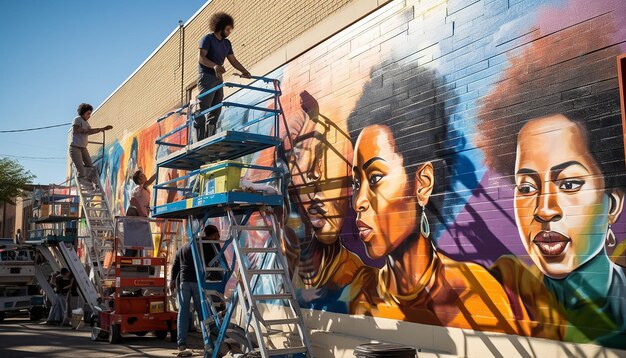
The city’s art scene is equally compelling. The Detroit Institute of Arts (DIA) houses a world-class collection, including Diego Rivera’s magnificent “Detroit Industry Murals.” Beyond the institutional, Detroit boasts a robust street art scene, with murals and installations transforming public spaces into outdoor galleries. Community art initiatives, like the Heidelberg Project, use art as a catalyst for discussion and change, showcasing the city’s innovative approach to urban renewal.
Detroit is also a culinary destination, with a diverse food scene ranging from classic Coney Island hot dogs to innovative farm-to-table restaurants. These establishments often source ingredients locally, reflecting the city’s growing commitment to urban agriculture and sustainable practices. Engaging with Detroit means experiencing a city in continuous evolution, where history and innovation dance in harmony, offering lessons in resilience and creativity that are truly unparalleled.
Appalachian Artisanship and Folk Traditions: Handcrafted Heritage in the Mountains
The Appalachian region, stretching from southern New York to northern Georgia, is often romanticized or misunderstood, yet it harbors a deep and enduring cultural heritage rooted in self-sufficiency, community, and a profound connection to the land. Beyond its breathtaking natural beauty, Appalachia is a living museum of traditional arts, crafts, and folk music passed down through generations. In 2025, a journey into these mountains offers a unique chance to witness and participate in traditions that embody the spirit of American craftsmanship and storytelling.
The isolation of various mountain communities fostered a strong sense of self-reliance and the preservation of distinct cultural practices. This includes unique dialect patterns, traditional foodways, and a wealth of oral histories that vividly recount the triumphs and tribulations of mountain life. Engaging with these communities provides an authentic, unfiltered look at a resilient and resourceful people.
Crafting a Legacy: From Quilts to Fiddles
Appalachian artisans are renowned for their skill in traditional crafts, many of which were born out of necessity and have evolved into intricate art forms. Quilting, pottery, wood carving, and instrument making (especially banjos and dulcimers) are not just hobbies; they are cultural expressions and often a means of livelihood. Visiting craft cooperatives and artisan studios allows travelers to see these skills in action, purchase authentic handmade goods, and perhaps even learn a new craft.
- The Folk Art Center (Asheville, NC): Home to the Southern Highland Craft Guild, showcasing and selling traditional and contemporary Appalachian crafts. Often has resident artisans demonstrating their skills.
- Berean School of Arts and Crafts (Huntsville, TN): Offers workshops and demonstrations in traditional Appalachian crafts, including weaving, blacksmithing, and basketry.
- Mountain Music Trail (WV): A self-guided tour of venues and towns in West Virginia known for old-time and bluegrass music, often featuring jam sessions and local performances.
Music is the heartbeat of Appalachia, with old-time, bluegrass, and traditional gospel deeply embedded in the region’s identity. The distinctive sound, often featuring fiddles, banjos, and dulcimers, tells stories of daily life, love, loss, and celebration. Attending a local jam session, a square dance, or a small folk festival offers an immersive experience, inviting visitors to tap their feet or even join in the music-making.
Furthermore, Appalachian food traditions, though simple, are hearty and reflective of the region’s agricultural past. Dishes like biscuits and gravy, bean dishes, and various preserves speak to a history of making much from little. Many small towns throughout Appalachia also host local farmers’ markets and food festivals that highlight regional specialties and the deep connection between the land and its bounty.
Engaging with Appalachian culture means appreciating the slower pace of life, the generosity of spirit, and the enduring value placed on heritage and community. It’s an opportunity to connect with a part of America where traditions are not just preserved but lived, offering a truly unique and enriching cultural encounter rarely found elsewhere.
| Key Cultural Experience | Brief Description |
|---|---|
| ⚜️ Cajun Country Rhythms | Immerse yourself in Louisiana’s distinctive blend of French, African, and Spanish influences through music, food, and vibrant festivals like Courir de Mardi Gras. |
| 🏜️ Indigenous Southwest Traditions | Connect with the enduring heritage of Navajo and other Indigenous communities by visiting ancient pueblos, witnessing traditional arts, and respectfully engaging with tribal-led tours. |
| 🧺 Gullah Geechee Coastal Heritage | Explore the unique cultural preservation along the southeastern coast, characterized by distinct language, sweetgrass basket weaving, and traditional lowcountry cuisine. |
| 🎶 Detroit’s Art & Innovation | Experience the vibrant rebirth of Motor City through its iconic Motown legacy, thriving street art scene, and innovative community-led revitalization efforts. |
Frequently Asked Questions About US Cultural Experiences
▼
The best way to respectfully engage with Indigenous American cultures is to prioritize tribal-led tours and businesses. Research and follow tribal customs, particularly regarding photography and sacred sites. Always ask permission before taking photos of people or ceremonies, and support authentic cultural products directly from tribal artists. This approach ensures respect for sovereignty and contributes to cultural preservation.
▼
Yes, Gullah Geechee traditions are very much alive and actively practiced today, though they face modern challenges. Communities actively preserve their unique language, culinary traditions, and crafts like sweetgrass basket weaving. Organizations like the Gullah Geechee Cultural Heritage Corridor Commission work diligently to ensure these traditions continue and are celebrated, making the region a vibrant cultural destination.
▼
Louisiana’s Cajun and Creole cultures are unique due to their distinct fusion of French, African, Spanish, and Native American influences. This blend is evident in their creole languages, soulful music (Zydeco and Cajun), and distinctive culinary traditions like gumbo and jambalaya. The region’s rich history of migration and adaptation has created a truly unparalleled cultural tapestry, celebrated with passion and resilience.
▼
Detroit’s cultural scene has evolved significantly beyond its automotive history, though its industrial past remains a foundational element. The city is now a hub of artistic innovation, with a thriving street art scene, world-class museums like the DIA, and a vibrant music landscape that includes the birth of techno. Community-led initiatives have transformed urban spaces, fostering a spirit of resilience and contemporary creativity.
▼
To experience authentic Appalachian folk traditions, consider visiting craft centers like the Folk Art Center in Asheville, NC, or smaller community workshops. Attending local music festivals, like fiddlers conventions, or finding open jam sessions in mountain towns can offer immersive musical experiences. Supporting local artisans and small businesses directly contributes to the preservation of these handcrafted heritage traditions.
Conclusion: Beyond the Postcard – Discovering America’s Rich Cultural Heartbeat
As this US Travel Guide: 5 Unique Cultural Experiences You Won’t Find Anywhere Else in 2025 illustrates, America’s cultural landscape is far more intricate and compelling than widely perceived. Moving beyond familiar landmarks and popular tourist destinations, an entirely different narrative unfolds—one of deep historical roots, community resilience, and vibrant living traditions. From the soulful bayous of Louisiana to the resilient spirit of Detroit, the ancient ways of Indigenous peoples in the Southwest, the unique heritage of the Gullah Geechee Corridor, and the enduring artistry of Appalachia, these experiences offer more than just sights; they offer profound insights into the myriad identities that collectively compose the American story. By embracing these unique cultural journeys in 2025, travelers can forge genuinely meaningful connections, gain a deeper understanding of the nation’s diverse heritage, and leave with memories that resonate long after the trip concludes. This approach to travel is not just about visiting places, but about truly experiencing the heart and soul of a nation.
